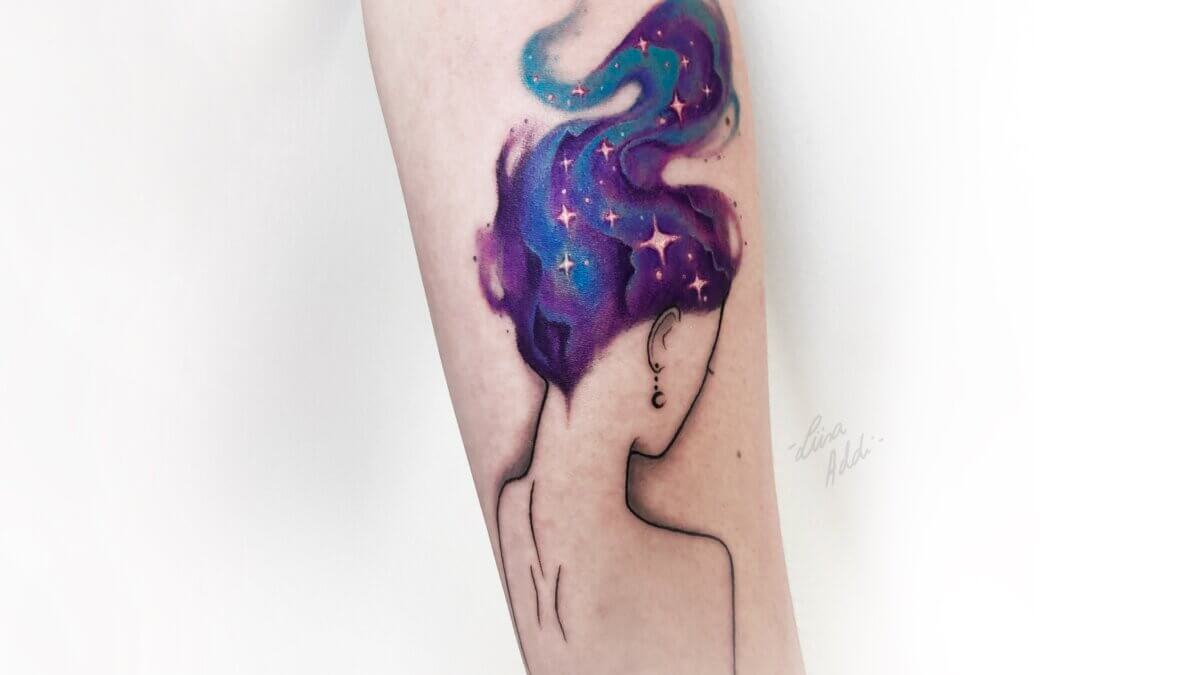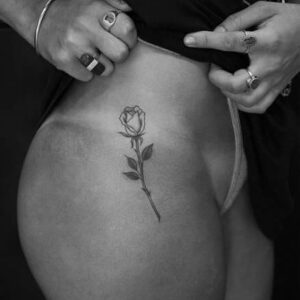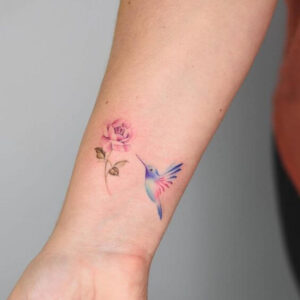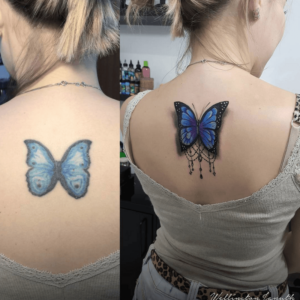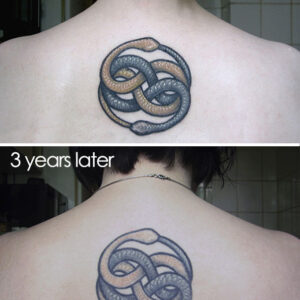After years of careful planning, analysing and thinking you have finally reached the conclusion that it’s time to bring that awesome tattoo idea to life. Meanwhile, time brings along many questions. To have it done in a visible spot or hidden? What if I lose weight and that ruins it? What if it hurts so bad we won’t be able to finish?
Fear not – here are 8 tips I’ve often had to give as examples for my clients and I believe it can help others too. They will definitely be helpful for experienced tattoo owners as well. The following are not rules to swear by! Tattoo art is getting wilder and more abstract by the minute and at the end of the day, you can decorate your body however you wish. These tips are just to help out in case you don’t know where to begin.
1.
Small tattoo – small area, detailed tattoo – large area.
I always recommend small and minimalistic tattoos to be done on small areas of the body such as the wrist, inner forearm, dorsum of the foot or ankle. If you have a small design done on a large area like the thigh, back or shoulder, then at one point you might discover that you’d like to expand or even cover it up, because it’s not in proportion to the body part. At the same time, super detailed designs on small areas might fade as the years pass and from afar, the image might be unintelligible.
2.
Tattoo right way up.
This usually applies to first time tattoo clients wanting a design on the inner forearm: they’d like the image facing the correct way when THEY look at it. However, if someone else looks when the arm is hanging, it’s upside down. Should you ever decide to get more tattoos or even a whole sleeve, you wouldn’t get the whole arm done upside down, right? The images should generally run from up to down and if there’s one on the wrist that’s the other way around, it will most likely start bothering you later.
3.
Tattoos as muscles.
This one applies to bigger designs like half sleeve, sleeve or the whole back. The more mobile and larger the area, the more it should follow the movement of muscles. It will mostly be the tattoo artist’s job to have the image fit well. That means to trust your artist’s sense of composition. It’s important to understand that a tattoo moving in sync with muscle will fit well with the body and look more natural.
4.
Visible or hidden?
It is absolutely each and every person’s own choice whether to get a tattoo in a visible spot or hidden. I have sorted them into three categories: very hidden (all placements on torso), possibly hidden (upper arm, forearm, calves, foot) and hardly hidden (hand, neck, face). A very hidden placement usually also means that the owner themself won’t see the tattoo very well. For some, that is intentional. The second category is for people who, for the most part, would like to show and admire their work of art but will sometimes need to hide it. For third category tattoo wishes I will generally take the time to properly discuss with the client whether they are Very Sure of the placement. Although our culture is slowly but surely getting more tolerant in terms of tattoos, there will still be people, countries and cultures that will find it very offensive. It might also make certain careers harder to pursue. If the client is completely aware of all of the possible repercussions, I have nothing against tattooing these very visible areas.
5.
Face forward.
This applies to tattoos featuring a face, such as one of a human or animal. For most tattoos on the shoulder, arm, side or thigh, it is visually nicer to see a portrait instead of the back of the head when looking at yourself and your tattoos in the mirror.
6.
Influences of weight.
Quite often people ask me if and how changes in weight can affect a tattoo. Here’s the thing: it’s very individual. The general rule is that a very rapid loss or gain in weight might affect it. The simplest example is pregnancy – the stomach grows and shrinks again within a very short period of time and we know that many women may obtain stretch marks and extra skin on the lower belly. That is why it isn’t recommended to get a stomach tattoo before pregnancy or without a definite decision to not have children. After pregnancy, a tattoo will work well to hide stretch marks. If the stretch marks are created on an existing tattoo, it’s much more difficult to correct the design. Generally, gaining weight won’t affect tattoos as much as rapidly losing it will, either. If there’s a plan to take part in a major weight loss program, it’s recommended to get a tattoo once the weight is closer to desired.
7.
Affinity for sunshine.
I’m glad I’m a tattoo artist in Estonia! Most people are super white and don’t enjoy tanning in the summer sun, which means that tattoos remain unfaded much longer and better! If you aren’t a classic Northerner, it’’s necessary to take into account that body parts like the upper back, chest, shoulders and outer arms get more sun. The easiest solution would be to avoid tattooing them altogether, but if that is truly your favourite placement, please take care to swear by sunscreen (at least enough for the tattoos to be covered). In every case it needs to be taken into account that these areas get the bulk of the damage from UV rays, which means that within a couple of years blacks might be greys and strong contrasts might be gone. Not to mention the skin itself gets damaged.
8.
Don’t choose by pain scale.
Certainly some areas will hurt more than others, but please refrain from Googling tattoo pain maps or listening to your friends’ horror stories. Pain tolerance is such an individual trait and most times it isn’t as bad as the client imagined. Most designs I tattoo are 4 hour sessions and most clients sit through it very well. If you only wish for a half hour design, don’t even begin to worry. However, in case of a larger project, sessions can always be halved. It’s very important to take breaks, eat, drink, stretch. The pain is temporary, the tattoo is forever. A small jump out of the comfort zone is worth it, if the tattoo is truly important to you. For everyone’s consolation, I have an awfully low pain tolerance. In spite of that I am in the process of completing a whole back project. It’s more than worth it.
Whew, that was a long one, but I hope that everyone got something out of it! I want to make it completely clear that these are not rules but tips to help people that haven’t even thought about these things make a choice or expand their horizon.
Are there any tips here that you have either knowingly or accidentally ignored?
